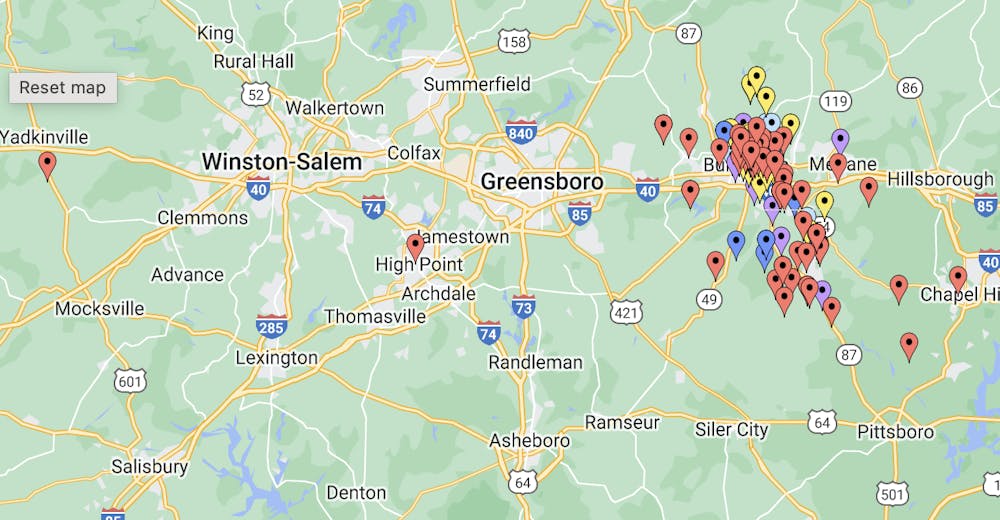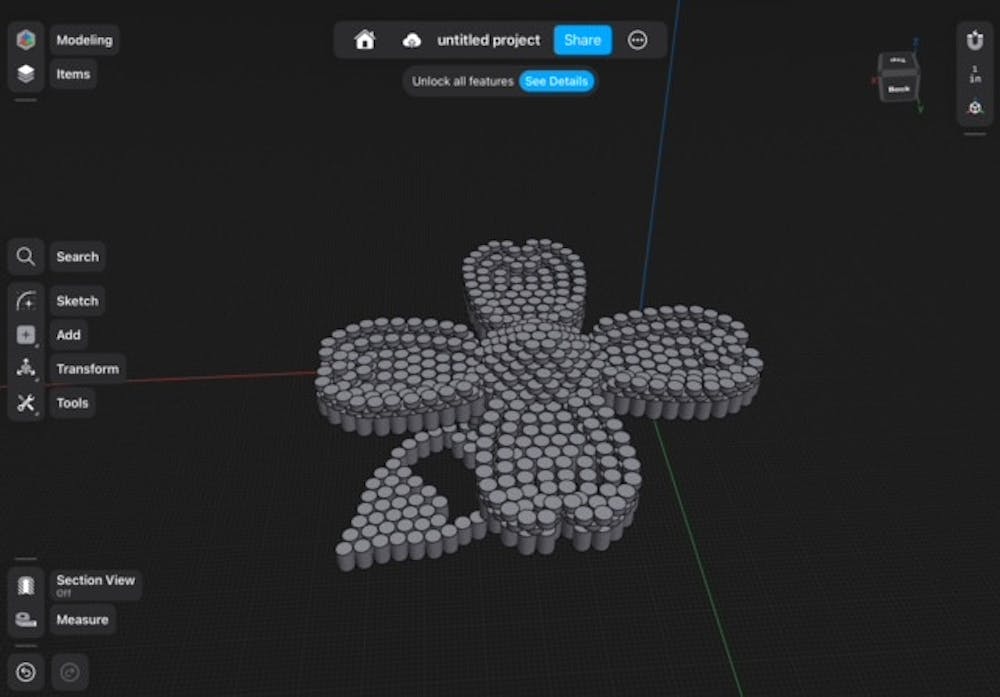Three students in EGR 2210: Engineering Design for Service are partnering with Southern Alamance Family Empowerment to promote the nonprofit, collect canned goods and spread awareness about food insecurity in Alamance County.
On Nov. 11, the group of Elon engineering students will deconstruct four structures made of canned goods to be donated to SAFE.
Griffin Chase, a senior majoring in entrepreneurship with a minor in engineering design, is one of three students partnering with SAFE. Chase said through this project, he has learned about food insecurity in Alamance County.
“We had to really try to understand the issue that we're trying to solve,” Chase said. “We're really looking to help people here. Our whole project is meant to serve other people.”
The structures will be built by students on Nov. 10 and 11, then deconstructed with aid by the community at an event at the Culture Mill in Saxapahaw.
Along with juniors Daniel Esterman and Sasha Hyde, Chase said they have ordered 1,932 cans through Second Harvest Food Bank.
Chase said they are building three structures: a pumpkin pie, a wall of cans spelling out “SAFE” and lotus flower because Saxapahaw was nicknamed “the flower of the Carolinas” by English explorer John Lawson in 1701.
Chase said he and his partners have volunteered at SAFE and he attended a community hearing event where he learned about the prominence of food insecurity in Alamance County.

Heat map of locations in Alamance County that are food insecure served by SAFE as of September 2023. Photo courtesy of Tiffanie Jackson.
“People might not have the means to get food, whether it's transportation or the money,” Chase said. “Some people might be embarrassed to ask for help. They’d really prefer to figure it out themselves.”
According to Tiffanie Jackson, executive director of SAFE, the nonprofit organization serves as a community space for Alamance County and spends most of its budget on its two food pantries, located in Graham and Saxapahaw.
“Our goal is to meet people where they are in their lives and partner with them to get them where they want to be,” Jackson said.
Jackson said SAFE served over 7,000 food insecure people in 2022 and is projected to serve at least 10,000 by the end of 2023.
According to the US Department of Agriculture, food insecurity is the condition of limited or inadequate access to food. Jackson said the difference between hunger and food insecurity is not having enough food versus having to make choices between food and other necessities.
“You're having to choose between food and some other basic thing that you need for your life,” Jackson said. “Are you going to pay for child care or food? And oftentimes what happens when people are food insecure is they get the least expensive — and most often least healthy — thing because the least healthy foods are the least expensive to feed their families and to just get calories into their kids.”
According to Feeding America — as of 2021, there is a food insecure population of 19,330 in Alamance County: 11.3% of the population. Jackson also said 20% of children in Alamance County schools are food insecure, and 40% of the population served at SAFE is made up of children.
“We're trying to work towards more healthy eating, but also, if you give a kid a good basic start, life's easier,” Jackson said.
Engineering professor Sirena Hargrove-Leak — who teaches EGR2100 — said the course is designed to make engineering students think first about who they are designing for.
“There are so many examples of very well-meaning engineers designing something that is pretty much not useful for the person they intended because they never considered the needs, desires and wants of the person or the group,” Hargrove-Leak said.
She said the course partners with the Kernodle Center for Civic Life — which is funding the canstruction project through a community partnership initiative grant.
Hargrove-Leak said when she originally started the course in 2015, she had four students and one project. Now, she said she has 38 students and eight community partners with 12 different projects.
She also said she has had to rethink some of the projects to ensure they are feasible to complete in one semester.
“As this class grows, and we still have one semester, I really need to be thoughtful about scoping the projects so that they are reasonable for completion in one semester, and we don't end up disappointing people,” Hargrove-Leak said. “That weighed heavily on my conscience.”
She said her students enjoy the class because of its community connection.
“Many of the students really enjoy this opportunity because many are drawn to engineering because of their desire to help people,” Hargrove-Leak said. “It's just a natural fit.”
She said her favorite part of the course is helping the community.
“We have the good fortune of having a lot of knowledge and skill, and now we have facilities to be able to design these things,” Hargrove-Leak said. “I feel like it's our duty to give back.”
While EGR2100 is required for the engineering design minor, Chase said he enjoys the class.
“It's definitely nice to do something that has a bit more of an impact than just getting a grade,” Chase said.
He said the event is meant to bring the community together.
“We would like to build these nice, big designs and we can't do them all ourselves — just the three of us,” Chase said. “It's to get volunteers, to get people involved and interested.”
Jackson said the event will benefit the community as a whole.
“It helps you to understand the entirety of the community where you're from, where you're living. Alamance County isn't just Elon and it's not just Burlington,” Jackson said. “It helps you understand the entirety of the community.”
She said volunteering is important — especially in a county with a prevalence of food insecurity.
“Someone you know is food insecure,” Jackson said. “You're helping your neighbor.”


